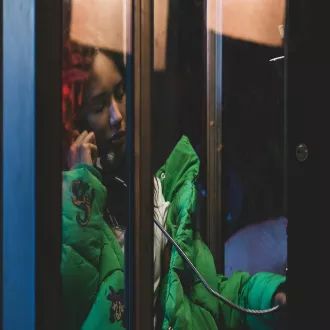Transcription The Synergy between Types of Communication
Communication as an integrated whole
In practice, different types of communication rarely occur in isolation.
A typical human interaction is a complex interweaving where the verbal, the nonverbal and the iconic intertwine to create a complete meaning.
When we talk to someone (verbal communication), we simultaneously use facial expressions and gestures (nonverbal communication) to nuance and emphasize our message.
If during that conversation we display a photograph on our phone, we are integrating an element of iconic communication.
An effective communicator not only masters each type of communication separately, but understands how they combine and influence each other, ensuring that all channels convey a coherent and aligned message for greater impact.
Practical example of communication synergy
A televised political speech is an excellent example of communicative synergy in action.
First, we have the oral communication: the words the politician chooses, his rhetorical structure and the content of his message.
Simultaneously, his nonverbal communication is crucial: his tone of voice (firm, reassuring, energetic), his hand gestures to emphasize key points, his posture and his eye contact with the camera.
The stage itself provides iconic communication, such as the flags behind him or the party logos on the lectern, which visually reinforce his message.
Finally, written communication may appear in the form of subtitles or on-screen graphics that summarize the main points.
All these elements work together to build an image, convey an emotion and persuade the audience, and the success of the speech depends on the coherence between all these forms of communication.
Consistency and contradiction between communication channels
The key to powerful communication is congruence: that all communication channels send the same message.
If you tell someone "I am very interested in your proposal" in a monotone voice while looking at your watch, the nonverbal message contradicts the verbal one.
In these cases, the receiver is more likely to believe the nonverbal signal, which betrays your apparent boredom and haste.
This contradiction generates distrust and confusion, as the listener perceives a dissonance and wonders what the real message is, even if he is unaware of the analysis he is making.
A credible and persuasive communicator is one who achieves total alignment between his words, his voice and his body, ensuring that every signal he emits reinforces his main message rather than undermines it.
Summary
In practice, different types of communication rarely occur in isolation, but are woven together in a complex web. An effective communicator understands how they combine and influence each other to create a complete meaning.
A political speech is an excellent example of this synergy, where oral, nonverbal, iconic and written work together. The success of the speech depends on the coherence between all these forms of communication.
The key to powerful communication is congruence: that all communication channels send the same message. If the nonverbal message contradicts the verbal message, the receiver will probably believe the nonverbal signal, generating distrust.
the synergy between types of communication




